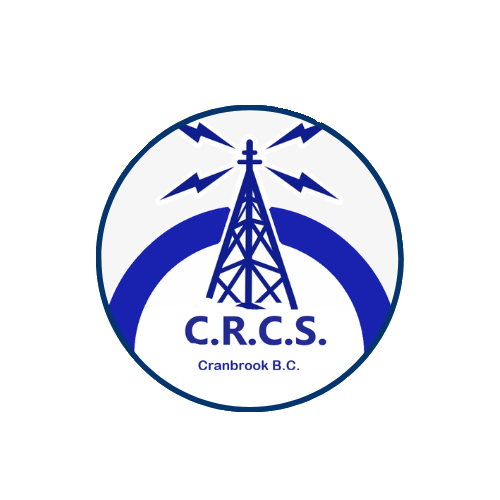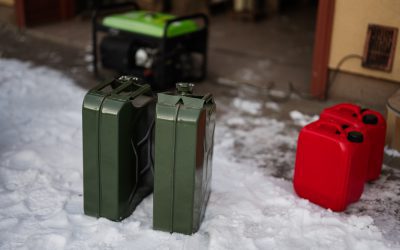The world of amateur radio is changing fast. Gone are the days when you had to be physically present in your shack to enjoy your favorite hobby. Thanks to advances in technology and a growing interest in flexible, anywhere-anytime operation, remote operation has become one of the most exciting frontiers for hams everywhere. Whether you want to access your station from the comfort of your living room, operate from across the country, or even share your station with club members, remote operation opens up a world of possibilities.
At Cranbrook Radio Club Society (CRCS), we’re passionate about helping hams embrace innovation while staying grounded in practical, step-by-step guidance. In this comprehensive guide, we’ll break down everything you need to know about remote operation—what it is, why it’s useful, and how to set up your station for reliable, secure online control. Whether you’re a seasoned DXer, a working professional with limited time, or an experimenter eager to try the latest tech, this Remote Operation 101 will get you on the air—wherever you are.
What is Remote Operation in Amateur Radio?
Remote operation means controlling your amateur radio station from a distance, using the internet or another network connection. Instead of sitting at your shack, you can log in from your laptop, tablet, or even smartphone, tuning frequencies, adjusting antennas, and making QSOs as if you were right there.
Remote operation can take many forms:
- Simple audio streaming with PTT control
- Full-featured remote desktop or web interfaces
- Sharing your station with trusted operators for collaborative events
- Controlling multiple devices—rigs, rotators, amplifiers, and more
For some hams, remote operation means working their home station while traveling. For others, it’s about overcoming antenna or space restrictions by sharing a rural station. For clubs, it’s a way to keep members engaged and learning between meetings.
Why Try Remote Operation?
There are plenty of reasons to embrace remote operation in your ham radio journey:
- Accessibility: Get on the air from anywhere—whether you’re traveling for work, visiting family, or just relaxing in another room.
- Overcoming Restrictions: Beat HOA/condo bans, city noise, or limited space by operating a remote station in a better location.
- Maximize Station Use: Share your station with club members or friends, making the most of your investment.
- Emergency Preparedness: Keep your station accessible in case you can’t reach it physically during emergencies.
- Continuous Learning: Experiment with networking, automation, and next-gen ham radio tech.
At CRCS, we’ve seen remote operation help members stay connected and active—rain, snow, or shine.
The Building Blocks of Remote Operation
Setting up remote operation might sound daunting, but it’s easier than you think. Here are the core components you’ll need:
1. A Suitable Radio
Most modern HF, VHF, and UHF transceivers can be controlled remotely. Look for rigs with:
- CAT (Computer Aided Transceiver) control via USB or serial port
- Built-in network interfaces (e.g., Icom IC-7300, FlexRadio, Yaesu FTdx101D)
- External interfaces (RigExpert, microHAM, or other third-party solutions)
Older radios may require additional hardware for full remote control.
2. A Computer or Remote Server
You’ll need a computer (Windows, Mac, or Linux) at your shack to run control software, interface with the radio, and manage audio streams. Some radios (like FlexRadio) can be operated directly over the network, but most setups benefit from a dedicated shack PC.
3. Network Connection
A stable internet connection is essential. Wired Ethernet is best for reliability, but Wi-Fi can work if signal strength is strong and stable. For very remote locations, LTE/5G routers or even satellite internet are options.
4. Remote Control Software
There are many tried-and-true software options for remote operation:
- RemoteRig: Hardware solution for low-latency, real-time remote control.
- Ham Radio Deluxe (HRD): Offers remote server/client for rig control.
- TeamViewer, AnyDesk, or Chrome Remote Desktop: General remote desktop solutions for full shack access.
- SmartSDR (FlexRadio), Icom RS-BA1, Yaesu SCU-LAN10: Manufacturer-specific solutions.
- RemoteHams RCForb, DXSpider: Community-driven platforms for sharing and accessing remote stations.
5. Audio and PTT (Push-to-Talk) Handling
Transmitting and receiving audio over the network requires either software (VoIP solutions like Mumble, Skype, or built-in features of SmartSDR/RCForb) or hardware (RemoteRig, external audio interfaces). PTT can be handled via CAT commands, serial ports, or software buttons.
6. Remote Control of Accessories
If you want to adjust antennas, rotators, or amplifiers, you’ll need networked controllers or relay boards (e.g., Green Heron rotator controllers, Arduino/Raspberry Pi relay boxes). Many accessories can be managed via web interfaces or custom scripts.
Planning Your Remote Operation Setup
Every successful remote operation starts with a plan. Here’s how to approach your project:
Step 1: Define Your Goals
- Do you want basic rig control, or full control of every device in your shack?
- Will you operate alone, or share access with friends or club members?
- How far will you be from your station (across town, across the world)?
Step 2: Assess Your Station
- Is your radio compatible with remote operation?
- Do you have a reliable computer and internet connection at your shack?
- Are your accessories (amplifier, rotator, antenna switch) controllable via computer or network?
Step 3: Choose the Right Software and Hardware
- Select remote operation software that matches your radio and operating style.
- Decide if you’ll use a hardware solution (RemoteRig, dedicated audio interfaces) or software (remote desktop, VoIP).
- Make a list of cables, adapters, and accessories you’ll need.
Step 4: Plan for Security and Safety
- Use strong passwords and encryption for all remote access.
- Consider a VPN or secure remote desktop solution to prevent unauthorized access.
- Install remote power switches (e.g., Web Power Switch, WiFi plugs) in case you need to reboot equipment from afar.
Step 5: Test Locally Before Going Remote
Before operating from a distance, test your remote operation setup at home—connect via your local network (LAN) to ensure everything works as expected.
Step-by-Step: Setting Up Your Station for Remote Operation
Let’s walk through a sample setup using a popular radio and free software—perfect for getting started.
Example: Remote Operation with an Icom IC-7300 and TeamViewer
What You’ll Need:
- Icom IC-7300 (or similar radio with USB CAT control)
- Shack computer (Windows or Mac) with TeamViewer installed
- TeamViewer installed on your remote device (laptop, phone, tablet)
- Audio interface (virtual cable or external USB sound card)
- Reliable internet connection
Setup Steps:
- Connect Your Radio to the Shack PC:
Use a USB cable to connect your IC-7300 to your computer. Install Icom’s USB drivers and confirm CAT/control and audio are working. - Install Control Software:
Use Ham Radio Deluxe, OmniRig, or Icom’s RS-BA1 for radio control. Set up your audio interface for receive/transmit audio. - Install and Configure TeamViewer:
Set up TeamViewer on both the shack PC and your remote device. Secure your TeamViewer account with two-factor authentication. - Test Remote Desktop Control:
Use TeamViewer to connect from your remote device. Confirm you can see your shack PC’s desktop, control your radio software, and exchange audio. - Configure PTT:
Use CAT commands or a software PTT button. Ensure you can key the radio and transmit safely. - Test Audio Quality and Latency:
Adjust audio buffer sizes for smooth, clear audio. Lower quality settings may improve performance on slow connections. - Expand as Needed:
Add control for antenna switches, rotators, or amplifiers using networked controllers or web-relays. - Test Everything Locally:
Before you head off to the cabin, try logging in from your home Wi-Fi or a friend’s house to ensure everything works outside your LAN.
Advanced Remote Operation: Going Beyond the Basics
Once you’re comfortable with basic remote operation, consider expanding your station’s capabilities:
- Web-Based Interfaces: Tools like RemoteHams and OpenWebRX allow you to control and share your radio via a browser.
- Multi-User Access: Let club members or friends reserve and use your station remotely (with proper safeguards).
- Mobile Apps: Many radios and remote platforms offer smartphone/tablet apps for on-the-go operation.
- Remote Logging: Log QSOs in the cloud with services like Ham Radio Deluxe Logbook or N3FJP, and sync logs across devices.
- Automation: Use scripts or Raspberry Pi projects to automate antenna switching, station monitoring, or even weather alerts.
Security and Best Practices for Remote Operation
With great power comes great responsibility! Here are some CRCS-approved best practices:
- Always use strong, unique passwords on all devices and accounts.
- Keep your software and firmware updated to patch security vulnerabilities.
- Limit access—only share remote operation credentials with trusted operators.
- Monitor your station—consider a webcam for visual checks, or automated email/text alerts for temperature, power, or intrusion.
- Have a failsafe—remote power switches let you reset equipment if something goes wrong.
Troubleshooting Common Remote Operation Issues
Even the best setups can run into hiccups. Here’s how to tackle the most common problems:
- Audio dropouts or latency: Lower audio quality settings, use wired networks, or upgrade your internet connection.
- Rig control not responding: Check USB or CAT connections, ensure COM ports are mapped correctly, and restart software.
- PTT not working: Verify software settings, cable connections, and any relay or interface hardware.
- Security warnings: Double-check firewall settings and use VPNs or encrypted tunnels for sensitive operations.
CRCS Member Experiences: Remote Operation in Action
Our club members have used remote operation to:
- Operate their home station while traveling overseas.
- Collaborate on contest weekends from different locations.
- Share a club station with members who have antenna restrictions.
- Run remote nets for emergency preparedness drills.
The consensus? Remote operation keeps you on the air, learning, and part of the community—no matter where life takes you.
The Future is Remote (But Still Friendly)
Remote operation isn’t just a tech trend—it’s a powerful tool that enables more people to enjoy amateur radio, learn new skills, and stay active on the bands. Whether you’re looking to beat antenna restrictions, experiment with new modes, or simply enjoy the hobby from anywhere, setting up for remote operation puts the world at your fingertips.
Take it step by step, plan for security and reliability, and don’t hesitate to ask your local club (like CRCS!) for advice. With a little effort, you’ll be logging QSOs, chasing DX, and staying connected—wherever you roam.
73 from all of us at Cranbrook Radio Club Society—see you (remotely) on the bands!




